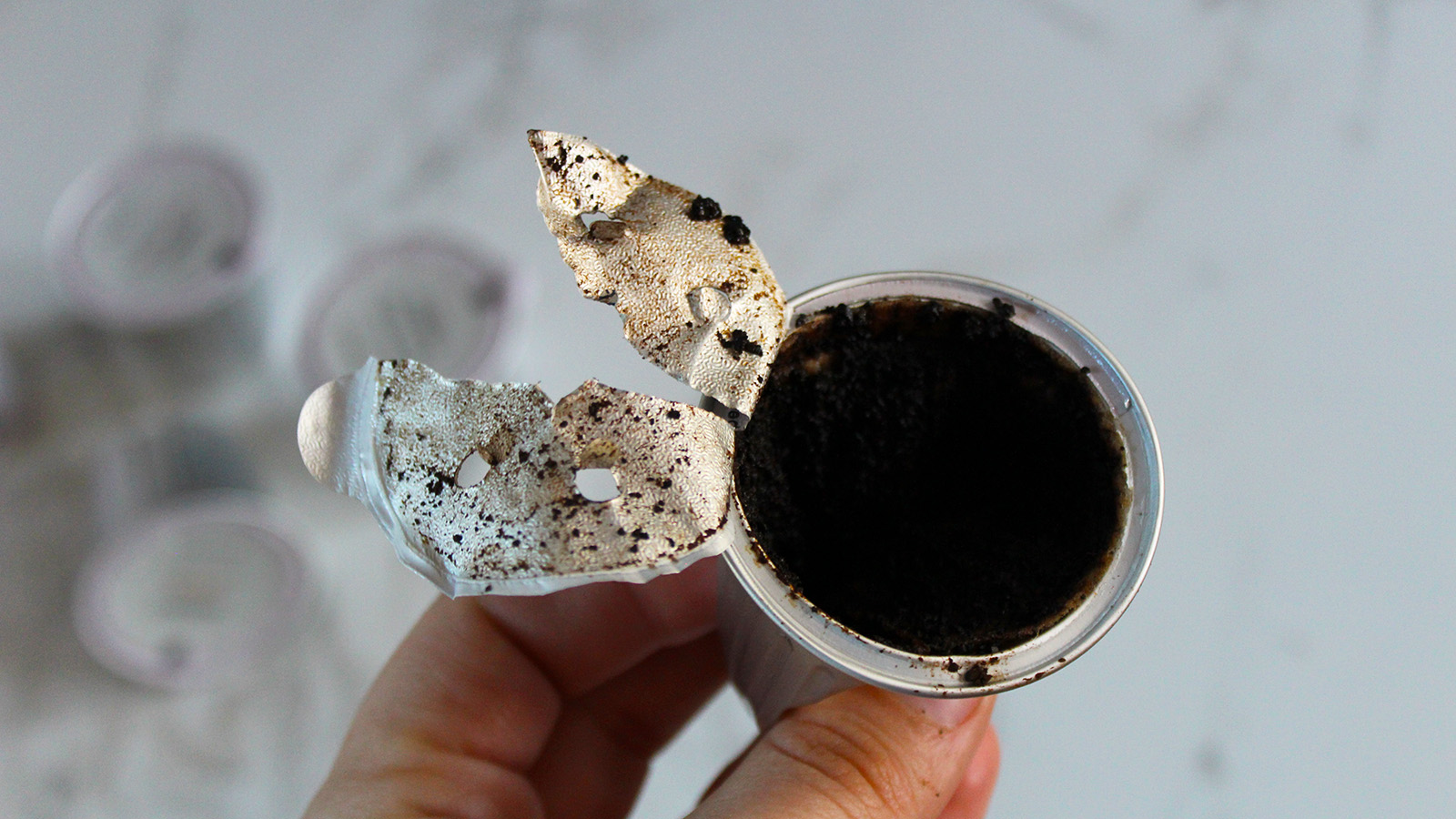
One common criticism about single-serving coffee makers like Keurigs is that they create significantly more waste than regular drip coffee makers. Most single-serve machines use plastic pods or K-cups for each drink, and if your family brews a few beverages per day, that adds up to thousands of plastic pods being used and tossed out every year.
There are a few ways to make your single-serve coffee machine a bit more eco-friendly. Perhaps the easiest way is to just recycle your K-cups. Keurig’s own K-cups are 100% recyclable—but there are a few caveats. The lids have to be removed and thrown away, and you also have to empty out the coffee grounds before putting the plastic shell into the recycling. Additionally, the pods are made from #5 plastic, which isn’t accepted in some curbside recycling programs. Another alternative is to purchase a reusable K-cup, which you can fill up with your own coffee, but they’re not compatible with all Keurig models.
In March, Keurig announced it was working on plastic-free coffee rounds that would do away with the need for K-Cups altogether, but for now, there’s a third option: aluminum coffee pods. Cambio Roasters recently launched a line of the first-ever aluminum coffee pods, which are filled with the brand’s small-batch organic coffee. This could be a big step toward in making single-serve coffee more eco-conscious — here’s why it matters, and what I thought when I tried out these innovative new pods for myself.
Why is aluminum better than plastic?

Since plastic coffee pods are already technically recyclable, you may be wondering why aluminum pods are better. The answer comes down to how many times the material can actually be recycled.
Aluminum is one of the few materials that’s infinitely recyclable. This means it can be recycled, made into something new, recycled again, and so on, indefinitely. Because the aluminum molecule is highly stable, it doesn’t break down during the recycling process, allowing the material to be easily recycled over and over again.
Plastic, on the other hand, can only be recycled a few times. Most plastics will only be recycled once or twice before the material ultimately ends up in the landfill. For this reason, aluminum is a much more eco-friendly choice than plastic.
How do aluminum coffee pods work?

The beauty of the new Cambio aluminum coffee pods is that they work just like the plastic ones. All you have to do is place one into your Keurig and brew your drink as usual.
Once you’re done brewing, let the pod cool down before peeling off the lid. Dump the grounds out into your trash or compost bin, then put the whole pod and its lid into the recycle bin. It’s that easy! You don’t have to rinse it out or remove the inner filter, and aluminum is accepted in virtually all curbside recycling programs.
While testing out these recyclable pods, I did find that the lids are sometimes hard to peel back, but when I encountered a particularly stubborn one, I just poked a hole in the lid with a knife and peeled it off that way. To get as much of the grounds out as possible, I also found it helpful to squeeze the sides of the pod as I banged it against the side of the trash can.

Are they any good?

I was able to try out a Variety Pack of these new aluminum coffee pods from Cambio, and I’m happy to report that the coffee is great! It’s rich and flavorful, and both my partner and I now prefer Cambio pods over our usual K-cups from Starbucks and Green Mountain Coffee.
Our favorites are the Colombian medium roast and Donut Blend light roast, but there are also several dark roast and decaf options, too. Across the board, these pods yield a more flavorful drink than my standard K-Cups, I'd buy them for the coffee alone — the recyclable pods are just an added bonus.
Are there any downsides?

The biggest negative that I could find with the Cambio coffee pods is simply that they’re more expensive than most K-cups. A 10-pack costs $12, which works out to $1.20 per pod. The 60-pack is a better value, retailing for $40, which is around $0.66 per pod.
For comparison, we usually buy Green Mountain Coffee’s Nantucket Blend for our Keurig, and a box of 72 K-cups costs around $50—roughly $0.53 per piece. If you buy the larger boxes, the Cambio pods are a few cents more per pod, but I think it’s worth it for delicious coffee that’s also significantly more eco-friendly.







